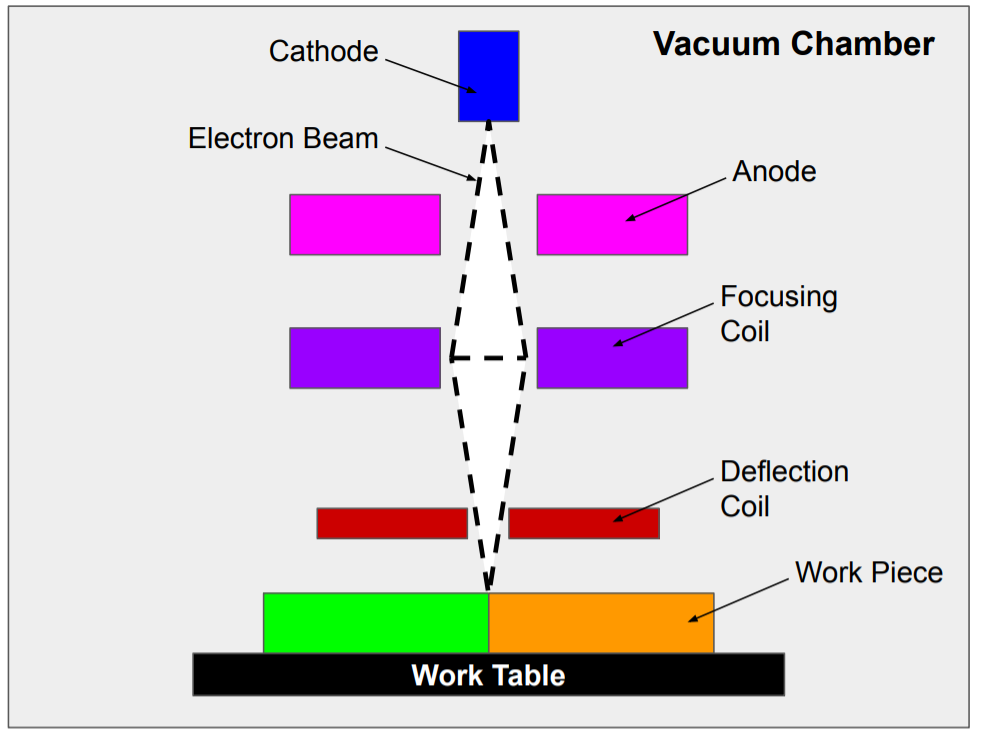Electron beam welding is a type of welding used to join metal parts by utilizing heat generated by the beam of electrons.
Applications
EBW process has applications to join a workpiece from thickness 0.01 mm up to 150 mm for steel and up to 500 mm for aluminum. Here is the list of materials that we can weld EBW.
- Steel
- Aluminum
- Tungsten
- Molybdenum
- Niobium
- Titanium
- Zirconium
- Beryllium
We suggest you also read this article on Ultrasonic welding.
How Electron Beam Welding Works?
EBW requires a vacuum chamber. It prevents electron energy loss due to the collision between electrons and air molecules.

As shown in the above image, an electron gun or cathode is heated in a vacuum to emit electrons. High voltage (approx. 150 kV) accelerates, and an electromagnetic coil converges these electrons. A deflection coil controls the position of an electron beam.
When a high beam of electrons strikes the workpiece, the kinetic energy of the electrons converts into heat energy that melts and fuses the workpiece material.
Advantages of EBW
Following are the advantages of the EBW welding process.
- A minimum 0.2 mm spot diameter is possible.
- Energy density in electron beam welding is 1000 times of arc welding.
- Can weld chemically active metals.
- Distortion around the welding is low because the heat applied to the area around the weld is low.
- Can melt high melting point metals.
- Dissimilar materials welding is possible.
- High-quality weld.
Disadvantages of EBW
Here is the list of disadvantages of the electron beam welding process.
- Welding equipment and process setup cost are high.
- A precise fit between welded parts is required.
- The maximum welded part size depends on the vacuum chamber size.
- Requires vacuum chamber for welding.
- X-Rays are a byproduct of the electron beam in the vacuum. That can be harmful to humans.
Commonly Asked Questions
A Vacuum chamber is required to prevent the loss of electron energy by the collision of electrons with air molecules.
EBW is mostly used to weld thick material with thin materials and dissimilar metals.
We will keep adding more updates on the EBW welding process. Please add your comments, questions, or suggestions on the EBW process in the comment box. We suggest you also read this article on the difference between TIG and MIG welding.

Add a Comment